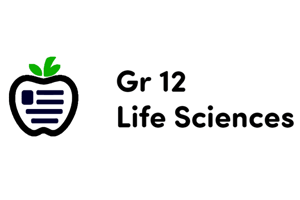Podcast
Questions and Answers
Which of the following theories did Jean Baptiste Lamarck propose?
Which of the following theories did Jean Baptiste Lamarck propose?
- Theory of Biogeography
- Theory of Need (correct)
- Theory of Natural Selection
- Theory of Genetic Variation
Lamarck believed that all traits developed during an organism's lifetime can be inherited by the offspring.
Lamarck believed that all traits developed during an organism's lifetime can be inherited by the offspring.
False (B)
What mechanism did Charles Darwin propose for evolution?
What mechanism did Charles Darwin propose for evolution?
Natural selection
What is the primary evidence used for relative dating of fossils?
What is the primary evidence used for relative dating of fossils?
What are homologous structures?
What are homologous structures?
In comparative anatomy, _____ are structures that have different ancestors but similar functions.
In comparative anatomy, _____ are structures that have different ancestors but similar functions.
Which of the following is considered a density-dependent limiting factor?
Which of the following is considered a density-dependent limiting factor?
What is carrying capacity?
What is carrying capacity?
Which of the following is NOT one of the four nucleotide bases of DNA?
Which of the following is NOT one of the four nucleotide bases of DNA?
____ provide indirect evidence of ancient animals.
____ provide indirect evidence of ancient animals.
Flashcards are hidden until you start studying
Study Notes
Introduction to Evolution
- Jean Baptiste Lamarck proposed three theories: need, use & disuse, acquired characteristics.
- Lamarck believed organisms adapt over time, influenced by environmental factors.
- Lamarck supported the idea of offspring inheriting traits acquired during their parents' lifetime.
Lamarck's Theories
- Theory of Need: Organisms must change to survive.
- Theory of Use and Disuse: Unused organs may disappear, while used organs develop (e.g., giraffe's neck).
- Theory of Acquired Characteristics: Traits developed during an organism's lifetime can be passed to offspring, but not all traits transfer.
Charles Darwin
- Introduced natural selection as the main mechanism of evolution.
- His voyage on the HMS Beagle lasted from 1831 to 1836.
- "Survival of the fittest" emphasizes that adaptable organisms are more likely to survive and reproduce.
Natural Selection
- Organisms with adaptive traits have higher survival rates.
- Common traits that enhance survival will proliferate in a population.
Artificial Selection
- Humans influence the evolution of species by selective breeding for desired traits.
- Examples include selective breeding in horses for racing or riding purposes.
Genetic Variation
- No two individuals share the same DNA.
- Variability exists in traits such as eye color and hair type within species.
Evidences of Evolution
- Fossils: Remains of once-living organisms, primarily found in sedimentary rocks.
- Trace Fossils: Indirect evidence (e.g., footprints, feces).
- Body Fossils: Direct evidence (e.g., bones, teeth).
Dating Fossils
- Relative Dating: Older fossils are found deeper in sedimentary layers; younger ones are higher up.
- Absolute Dating: Determines exact fossil age using Carbon-14; more Carbon-14 indicates a younger fossil.
Comparative Anatomy
- Studies similarities and differences in organism structures.
- Homologous Structures: Similar structures from the same ancestor serve different functions (e.g., humans and chimpanzees).
- Analogous Structures: Different structures from different ancestors serving the same function (e.g., birds and bats).
Biochemical Evidence
- Small DNA mutations provide insights into species evolution.
- Types include:
- Anatomy: Structural similarities.
- Embryology: Developmental similarities in embryos.
- Molecular Biology: Examines biological molecules like DNA.
Technology in Biochemical Evidence
- DNA Sequencing: Determines the order of nucleotides (A, T, C, G).
- Protein Sequencing: Maps the sequence of amino acids in proteins.
- Partition Chromatography: Separates components in two liquid phases.
Proteins and Amino Acids
- Proteins repair body parts and perform various functions.
- Amino acids serve as the building blocks of proteins.
Biodiversity
- Density-Dependent Limiting Factors: Influence of high population density on resources, predation, disease, and competition.
- Density-Independent Limiting Factors: Affect populations regardless of density (e.g., natural disasters).
- Carrying Capacity: The maximum population size an environment can sustain; populations stabilize around this number.
Studying That Suits You
Use AI to generate personalized quizzes and flashcards to suit your learning preferences.




